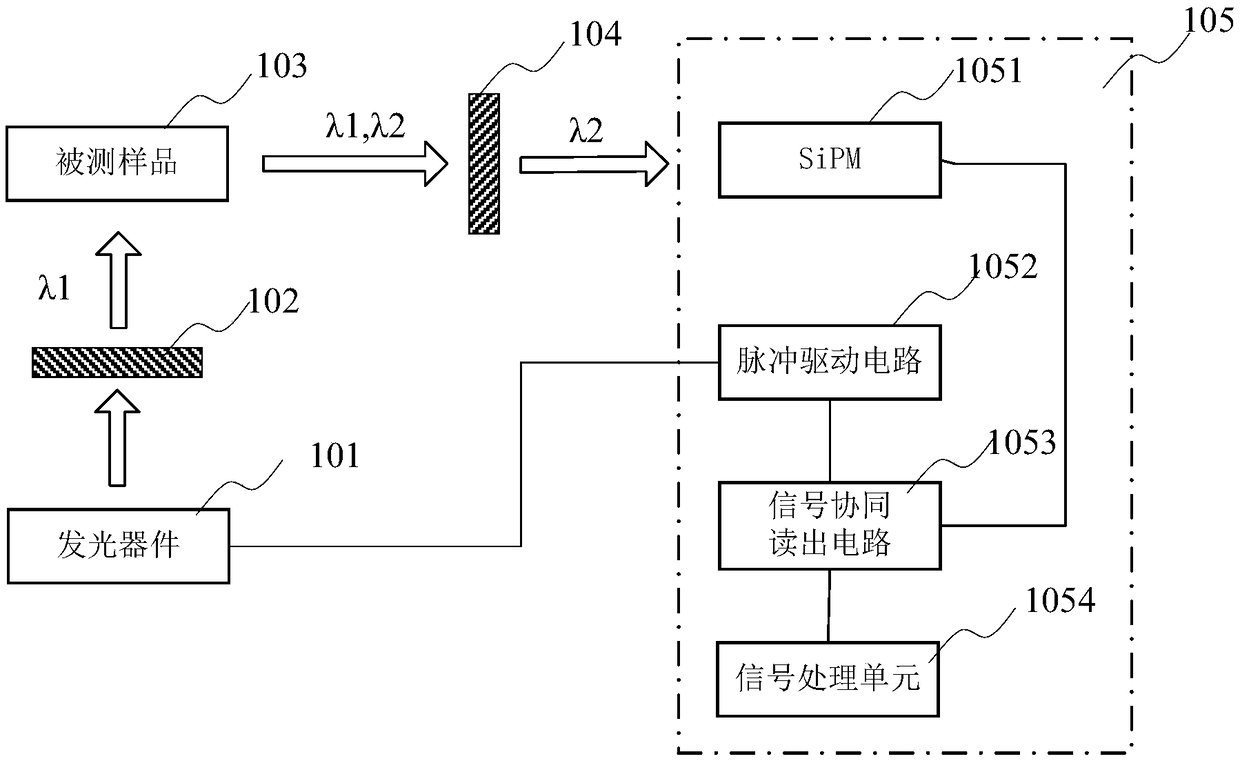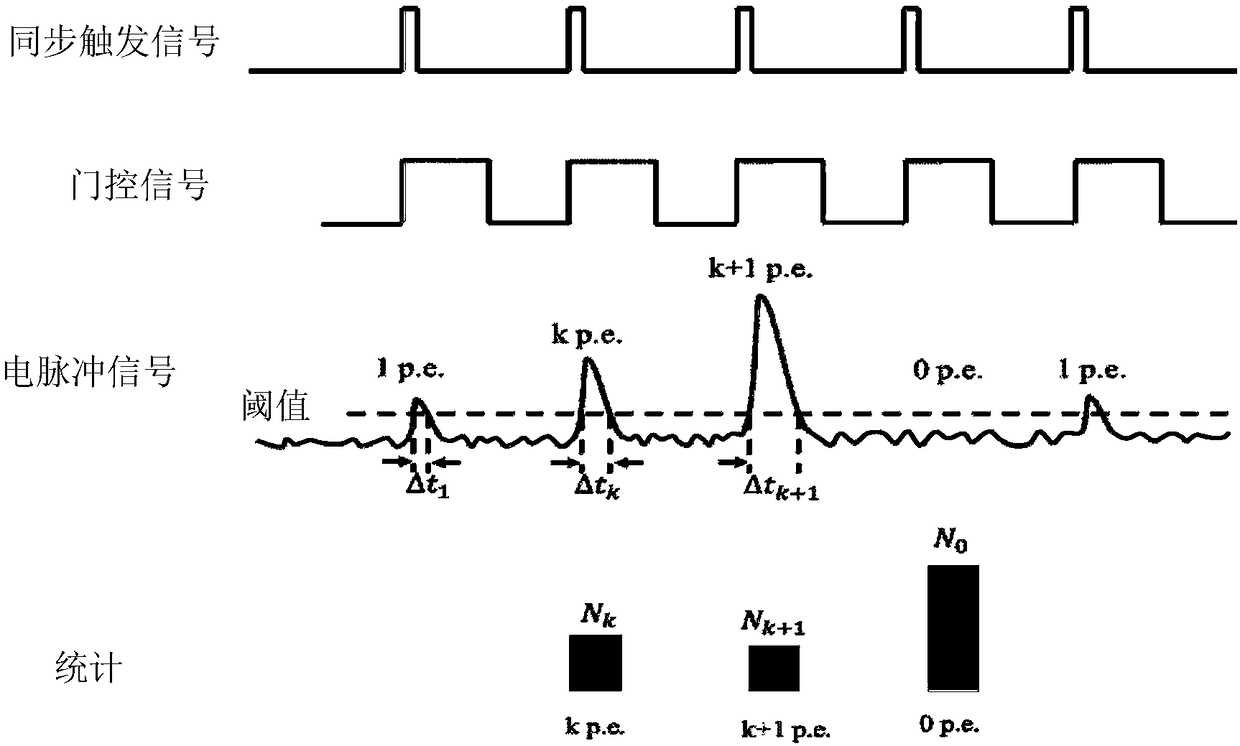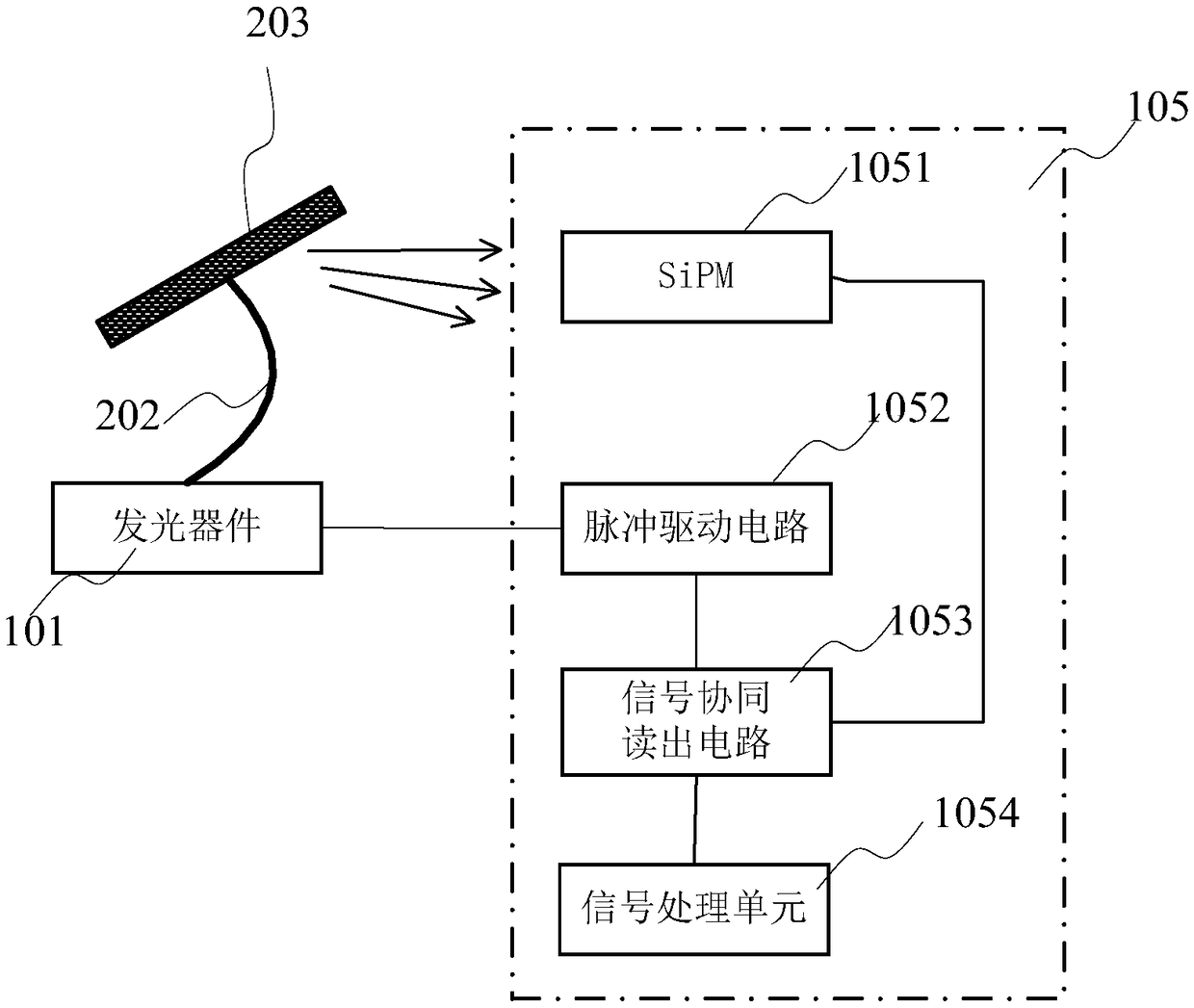Photoelectric detection device, system and method
A photoelectric detection and optoelectronic technology, applied in the field of photoelectric detection, can solve the problems of inability to measure, poor signal-to-noise ratio, incompatibility of single-chip FPGA, etc. and processing speed effects
- Summary
- Abstract
- Description
- Claims
- Application Information
AI Technical Summary
Problems solved by technology
Method used
Image
Examples
Embodiment Construction
[0041] Embodiments of the present invention will be described below with reference to the drawings. In the description and drawings, specific embodiments of the invention are disclosed in detail, indicating the manner in which the principles of the invention may be employed. It should be understood that the invention is not thereby limited in scope. The invention embraces many changes, modifications and equivalents within the spirit and scope of the appended claims.
[0042] It should be noted that representation and description of components and processes that are not related to the present invention and known to those of ordinary skill in the art are omitted from the drawings and descriptions for the purpose of clarity.
[0043] Features described and / or illustrated with respect to one embodiment can be used in the same or similar manner in one or more other embodiments, in combination with, or instead of features in other embodiments .
[0044] It should be emphasized th...
PUM
 Login to View More
Login to View More Abstract
Description
Claims
Application Information
 Login to View More
Login to View More - R&D
- Intellectual Property
- Life Sciences
- Materials
- Tech Scout
- Unparalleled Data Quality
- Higher Quality Content
- 60% Fewer Hallucinations
Browse by: Latest US Patents, China's latest patents, Technical Efficacy Thesaurus, Application Domain, Technology Topic, Popular Technical Reports.
© 2025 PatSnap. All rights reserved.Legal|Privacy policy|Modern Slavery Act Transparency Statement|Sitemap|About US| Contact US: help@patsnap.com



